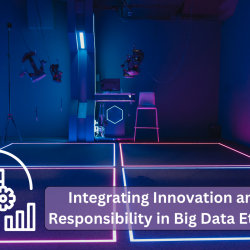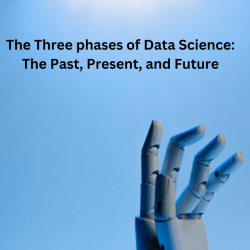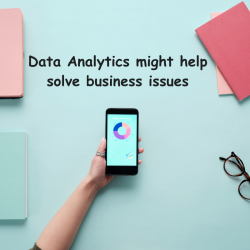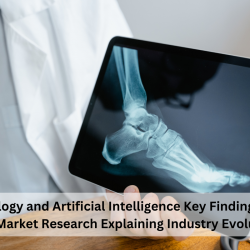Major Machine Learning Algorithms You Should Understand in 2023


Introduction To Machine Learning Algorithms
As artificial intelligence (AI) and machine learning (ML) become increasingly relevant, understanding how these technologies work is becoming paramount. If you’re a coder or an AI enthusiast wanting to keep up with the times, it’s important to know the most popular algorithms out there today.
The two primary types of machine learning are supervised learning and unsupervised learning. Supervised learning requires example data sets containing input/output pairs that can be referenced to teach machines certain tasks. Unsupervised learning doesn’t require labeled data; instead, it uses methods such as clustering to group data based on similarities before proceeding with analysis or prediction tasks.
Reinforcement learning is another type of ML used for training artificial intelligence agents on interacting with dynamic environments in order to optimize performance, or “success” rate. Reinforcement learning enables machines to learn behaviors based on trial and error rather than using a predetermined set of rules.
Supervised Learning Algorithms
As AI and Machine Learning algorithms become more and more prevalent in our everyday lives, it’s important to stay informed on the latest trends. If you want to stay ahead of the curve and be prepared for the future, you should understand the major supervised learning algorithms that are currently dominating the industry.
Supervised Learning is a branch of Machine Learning where labeled data is used for training models on specific tasks. The labels provide an indication of what output should look like when given a certain input. By comparing those labels, supervised algorithms can learn to recognize patterns between different inputs and outputs. There are many supervised algorithms but they can generally be broken down into three main categories: classification, regression, and decision trees.
Classification uses previously seen data points to categorize new data points into a set number of groups or classes. Regression looks for patterns in continuous datasets in order to predict the value at a given point or within a certain range. Decision Trees are another type of supervised learning algorithm which takes input from various sources and builds models capable of making decisions based on those inputs.
Unsupervised Learning Algorithms
Unsupervised learning is a method that finds correlations and relationships within data sets without any guidance from a teacher. This technique is useful for uncovering new and unexpected insights and can quickly sift through large amounts of data in order to make new predictions.
One popular example of an unsupervised learning algorithm is clustering. Here, the goal is to group similar data points together into cohesive clusters or groups based upon certain parameters. KMeans Algorithm is a simple and popular clustered approach that uses iterative refinement to assign data points into clusters intuition. Additionally, the Self Organizing Maps algorithm takes unlabeled input vectors from many sources and creates groups based on similarity, creating a low dimensional representation of inputs that can easily be visualized through clustering.
Another form of unsupervised learning is Principal Component Analysis (PCA). This technique takes high dimensional data sets and reduces them down to only a few variables while retaining most of the original information structure. This makes analyzing complex datasets much simpler since it’s easier to draw correlations between fewer variables as opposed to dozens or even hundreds.
Reinforcement Learning Algorithms
There are two main types of RL algorithms: value based and policy gradient methods. Value based approaches are modelfree and tend to use a table or a network to store values that the agent can use as a basis for decision making, such as Q Learning or SARSA. Policy Gradient Methods on the other hand, rely on a model approximator or policy network to learn optimal behavior.
No matter what type of algorithm is used, each RL algorithm must consider the exploration vs exploitation tradeoff; that is deciding whether the focus should be on exploring new areas in order to gain more information or exploiting known good areas for rewards. This balance between exploration and exploitation has a significant impact on learning outcomes.
In conclusion, if you want to stay ahead and increase your AI related skillset especially by 2023 understanding major reinforcement learning algorithms such as Q Learning, SARSA , Actor Critic methods etc., will be crucial for staying competitive in this expanding field both for personal development and job advancement opportunities.
Transfer Learning for Machine Learning
Transfer learning is a major concept in the world of machine learning that has been gaining more and more attention over the years. This form of learning is unique in that it allows experts to transfer knowledge from one task or domain to another, allowing for faster and more accurate predictions. Transfer learning can be used for supervised or unsupervised learning, natural language processing (NLP), computer vision (CV), reinforcement learning (RL), continuous integration & delivery (CI/CD), and automated machine learning (AutoML).
When it comes to transfer learning, deep neural networks play a key role. These are algorithms designed to mimic how humans think and learn, enabling machines to interpret data intelligently. By training a deep neural network on data involving what is known as “supervised” learning such as human speech or visual inputs individuals can establish patterns within large datasets which can then be transferred across domains or tasks.
In addition, unsupervised transfer learning is done by analyzing unlabeled data sets with no explicitly predetermined outcomes. This type of training requires complex algorithms which are capable of extracting meaningful information from vast amounts of random data points.
One area where transfer learning has been particularly beneficial is Natural Language Processing (NLP). By utilizing deep neural networks and related algorithms, powerful NLP applications can now detect sentiment in text and predict future events based on existing data sets – all without any prior training by humans.
Natural Language Processing (NLP) Algorithms
As the field of Artificial Intelligence (AI) continues to rapidly develop, it is essential for professionals in the tech industry to keep up with the major machine learning algorithms that will be in demand by 2023. One of the most important and popular algorithms are those pertaining to Natural Language Processing (NLP), which involve using AI and automation to process and analyze written language.
NLP combines machine learning algorithms with text classification, syntax parsing, semantic analysis, and deep learning technologies to interpret natural language. These components are used together to create AI models that can understand written language as humans do.
Techniques such as word embeddings or vector space modeling are often used in NLP tasks. Word embedding assigns numerical values to words so that a computer can better understand their meaning within a sentence or phrase. Vector space modeling is another technique that uses “stopwords” (common words such as “a”, “the”) and term frequencies to determine the meaning of words relative to each other — useful in tasks like sentiment analysis or document classification.
Deep Learning and Neural Networks
Deep Learning algorithms are used for various applications such as image recognition, medical diagnosis, text analysis, speech synthesis and more. The advantage of Deep Learning is that it can achieve better accuracy than traditional machine learning methods when correctly implemented.
The performance of Deep Learning algorithms depends on multiple factors including the complexity of the data set available, the number of layers and neurons in the network, the type of activation functions used (ReLu, Sigmoid etc.), the training process employed (e.g., stochastic gradient descent) and other hyperparameters.
Data representation also plays an important role in machine learning models as it determines how well a model is able to interpret its input data. This includes preprocessing techniques like feature scaling which allow a model to better work with larger datasets by normalizing them before performing any operations on them.
Major Machine Learning Algorithms You Should Understand in 2023
Supervised Learning:
Supervised learning is one of the most important algorithms for Machine Learning. It involves labeling data with labels or categories, then using it to determine the outcome when presented with new data. Supervised learning can be used for a variety of tasks such as object detection, image recognition, and natural language processing.
Unsupervised Learning:
Unsupervised learning is a process where a model learns from unlabeled data instead of categorized data. This allows machines to detect patterns without being taught how to do so, making it useful for tasks such as clustering and anomaly detection.
Reinforcement Learning:
Reinforcement learning uses rewards or punishments to teach a machine how to make decisions based on its environment. This is done by providing positive or negative feedback after an action has been taken in order to help the machine learn from its mistakes and successes in order to make more informed decisions in future.
Neural Networks:
Neural networks are used for deep learning, where large amounts of data are fed into a network that is modeled after the human brain (hence “neural”). They use mathematical computations in order to make sense out of vast amounts of data and can be used for tasks such as image recognition, voice recognition, natural language processing and more.






Ingen kommentarer endnu